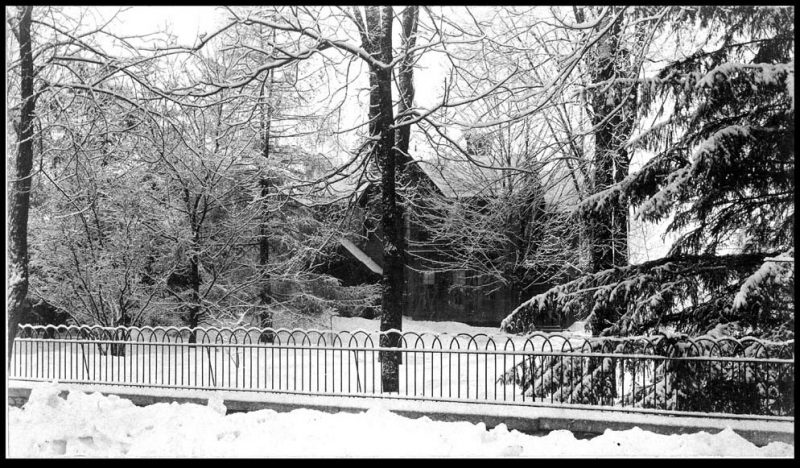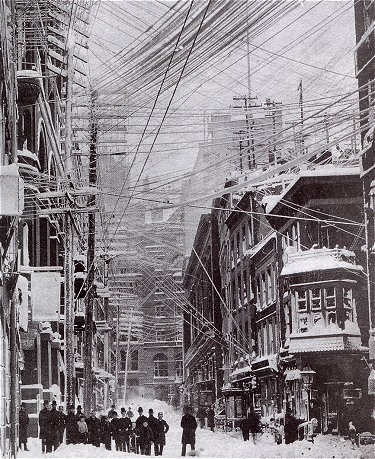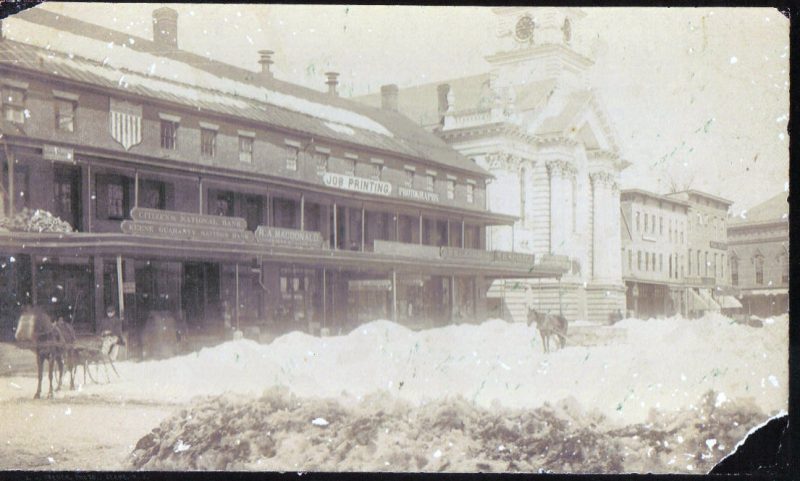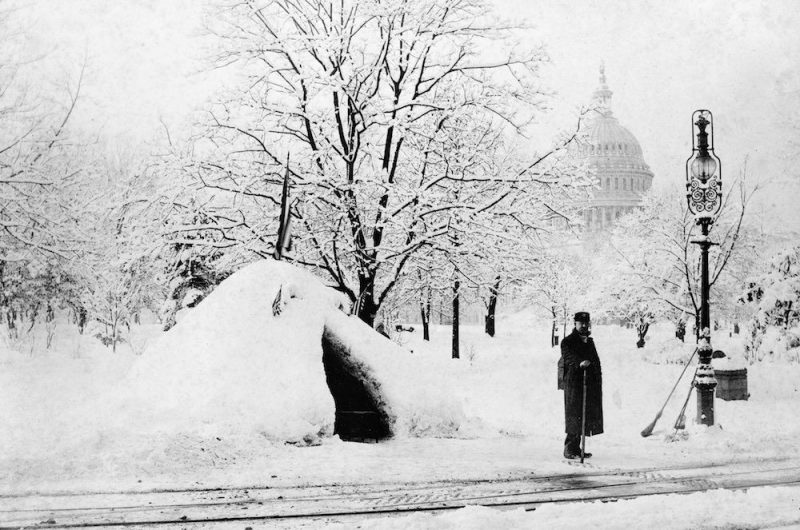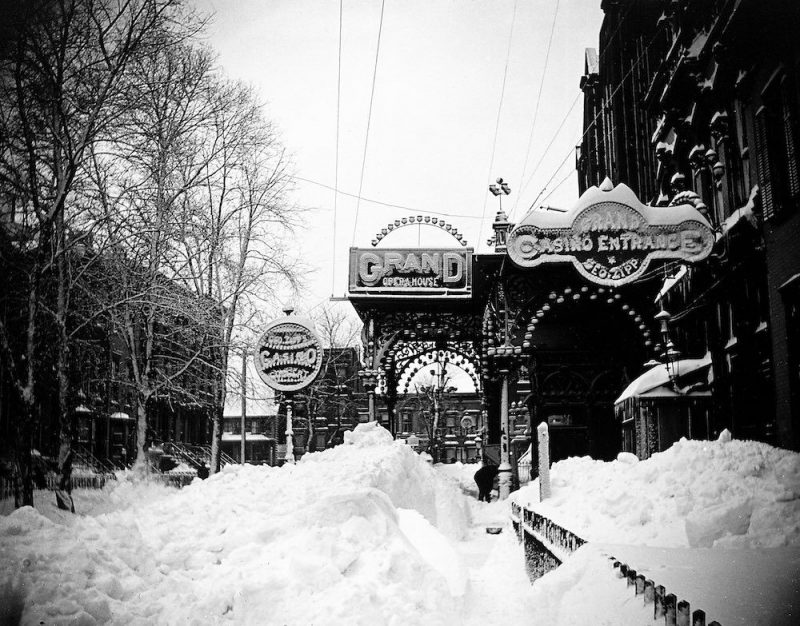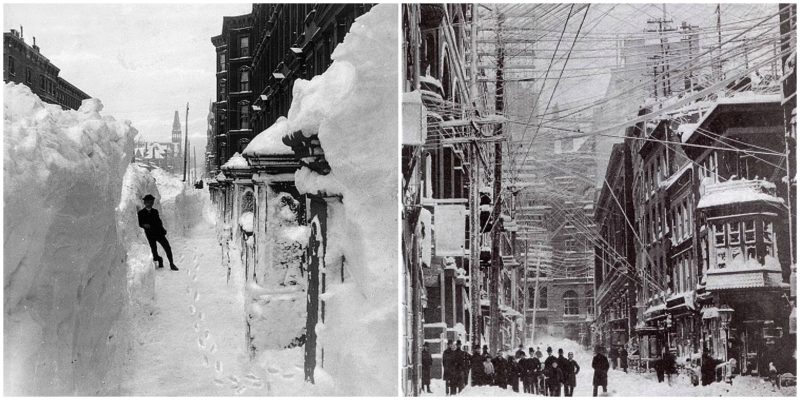The Great Blizzard of 1888 was one of the most severe recorded blizzards in the history of the United States of America. Snowfalls of 20–60 inches (51–152 cm) fell in parts of New Jersey, New York, Massachusetts, Rhode Island, and Connecticut, and sustained winds of more than 45 miles per hour (72 km/h) produced snow drifts in excess of 50 feet (15 m). Railroads were shut down and people were confined to their houses for up to a week.
The weather preceding the blizzard was unseasonably mild with heavy rains that turned to snow as temperatures dropped rapidly.The storm began in earnest shortly after midnight on March 12, and continued unabated for a full day and a half. The National Weather Service estimated this Nor’easter dumped as much as 50 inches (130 cm) of snow in parts of Connecticut and Massachusetts, while parts of New Jersey and New York had up to 40 inches (100 cm). Most of northern Vermont received from 20 inches (51 cm) to 30 inches (76 cm) in this storm..
The storm, referred to as the Great White Hurricane, paralyzed the East Coast from the Chesapeake Bay to Maine, as well as the Atlantic provinces of Canada. Telegraph infrastructure was disabled, isolating Montreal and most of the large northeastern U.S. cities from Washington, D.C. to Boston for days. Following the storm, New York began placing its telegraph and telephone infrastructure underground to prevent their destruction. From Chesapeake Bay through the New England area, more than 200 ships were either grounded or wrecked, resulting in the deaths of at least 100 seamen.
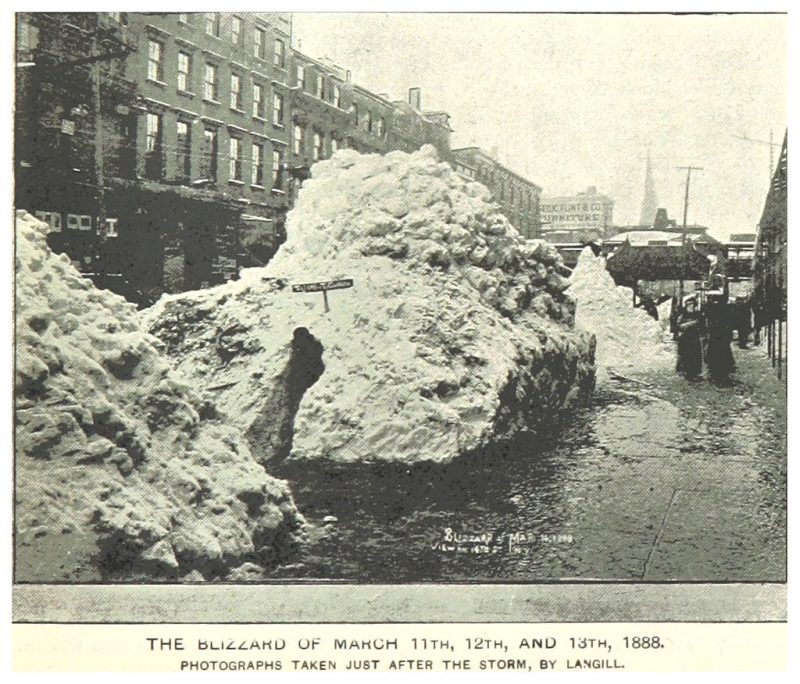
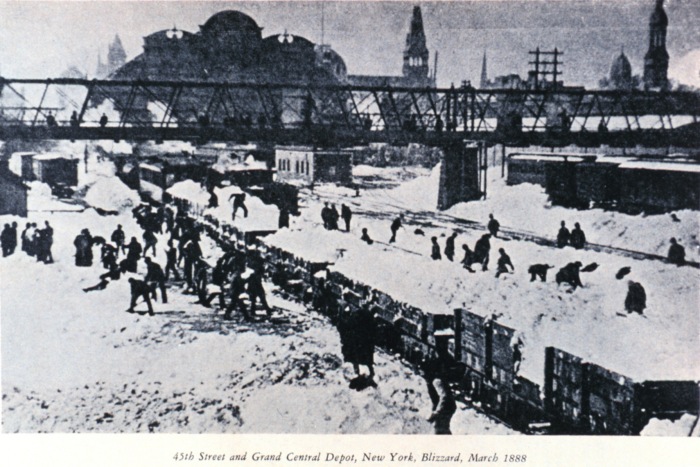
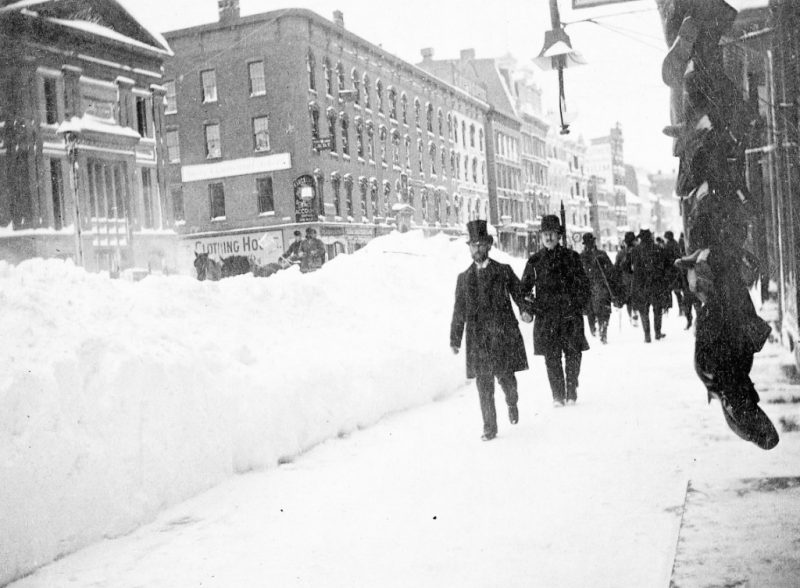
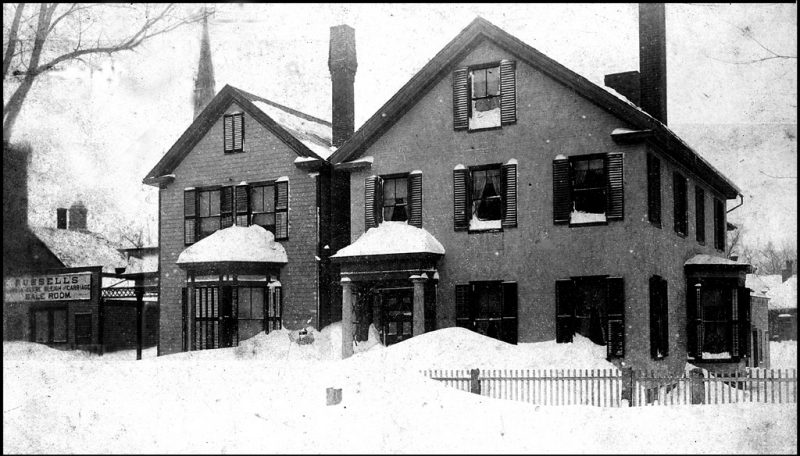
Drifts were reported to average 30–40 feet (9.1–12.2 m), over the tops of houses from New York to New England, with reports of drifts covering three-story houses. The highest drift (52 feet or 16 metres) was recorded in Gravesend, New York. It was reported that 58 inches (150 cm) of snow fell in Saratoga Springs, New York; 48 inches (120 cm) in Albany, New York; 45 inches (110 cm) of snow in New Haven, Connecticut; and 22 inches (56 cm) of snow in New York City. The storm also produced severe winds; 80 miles per hour (129 km/h) wind gusts were reported, although the highest official report in New York City was 40 miles per hour (64 km/h), with a 54 miles per hour (87 km/h) gust reported at Block Island.[5] New York’s Central Park Observatory reported a minimum temperature of 6 °F (−14 °C), and a daytime average of 9 °F (−13 °C) on March 13, the coldest ever for March.
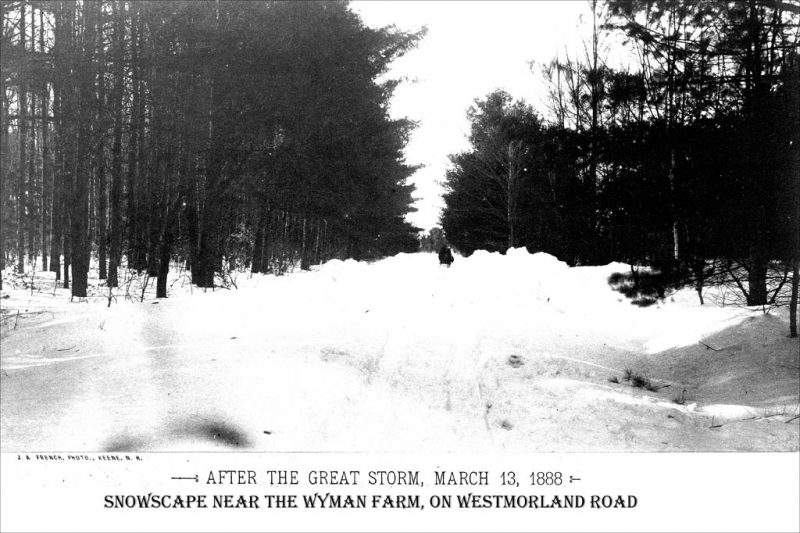
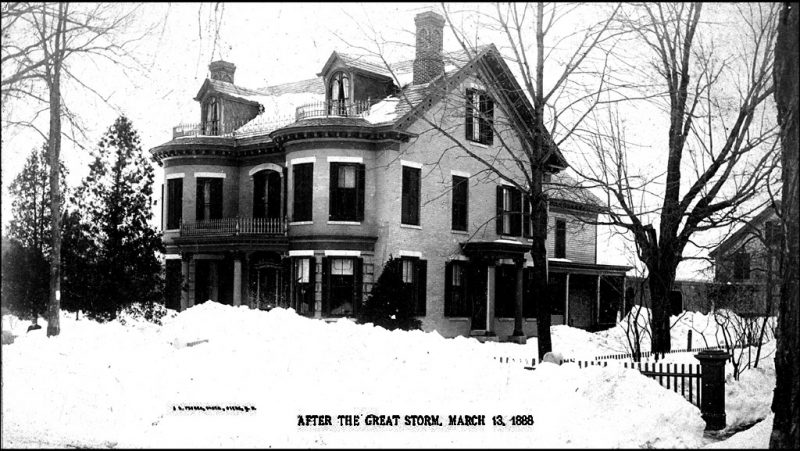
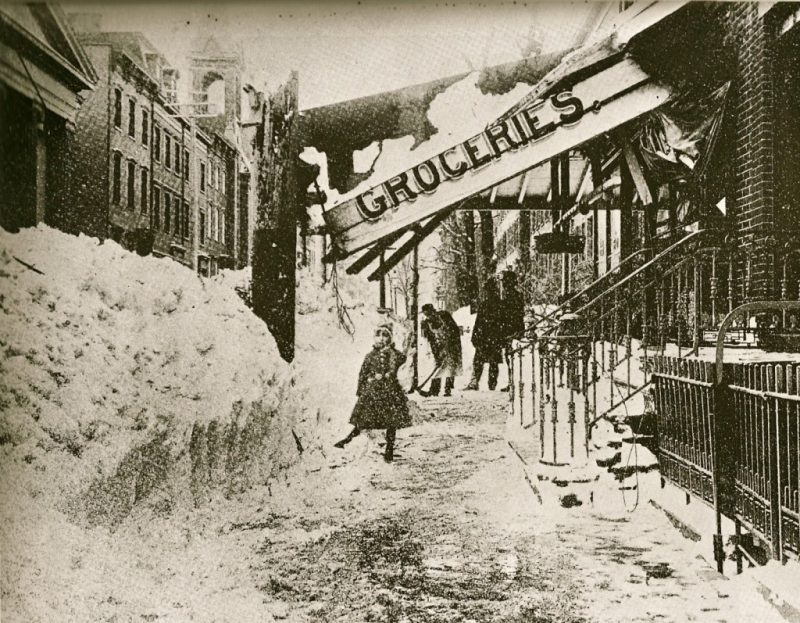
In New York, neither rail nor road transport was possible anywhere for days, and drifts across the New York–New Haven rail line at Westport, Connecticut took eight days to clear; transportation gridlock as a result of the storm was partially responsible for the creation of the first underground subway system in the United States, which opened nine years later in Boston.he New York Stock Exchange was closed for two days.Fire stations were immobilized, and property loss from fire alone was estimated at $25 million (equivalent to $660 million in 2016). Severe flooding occurred after the storm due to melting snow, especially in the Brooklyn area, which was more susceptible to serious flooding due to its topography.Efforts were made to push the snow into the Atlantic Ocean. More than 400 people died from the storm and the ensuing cold, including 200 in New York City alone.
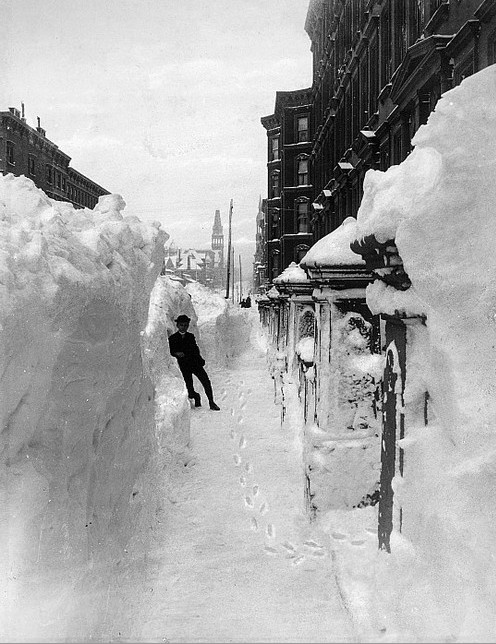
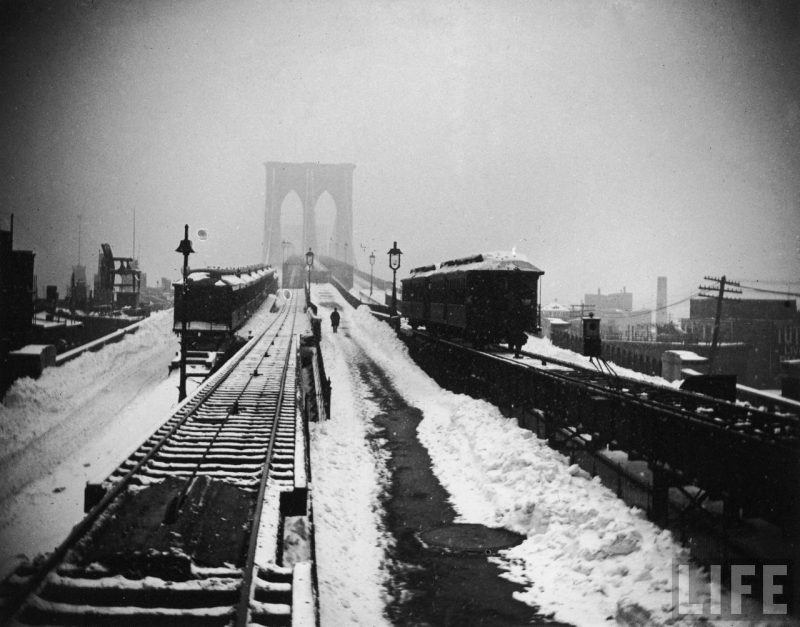
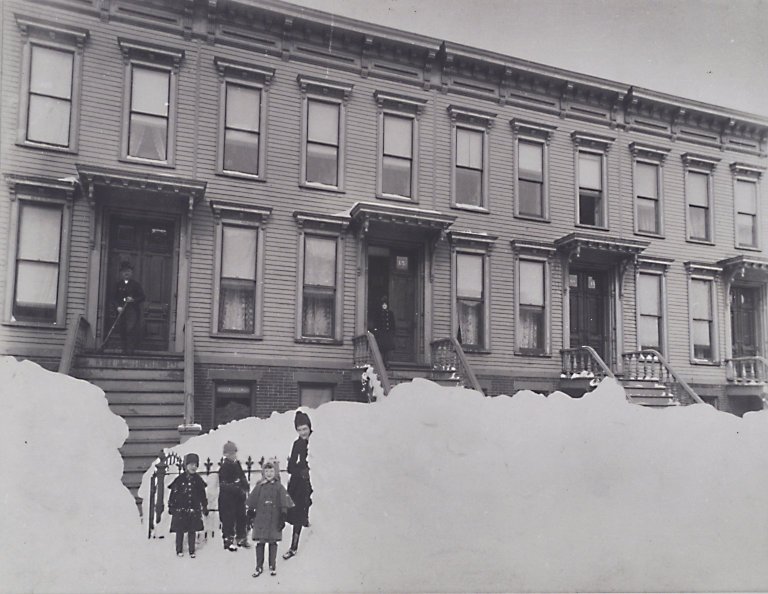
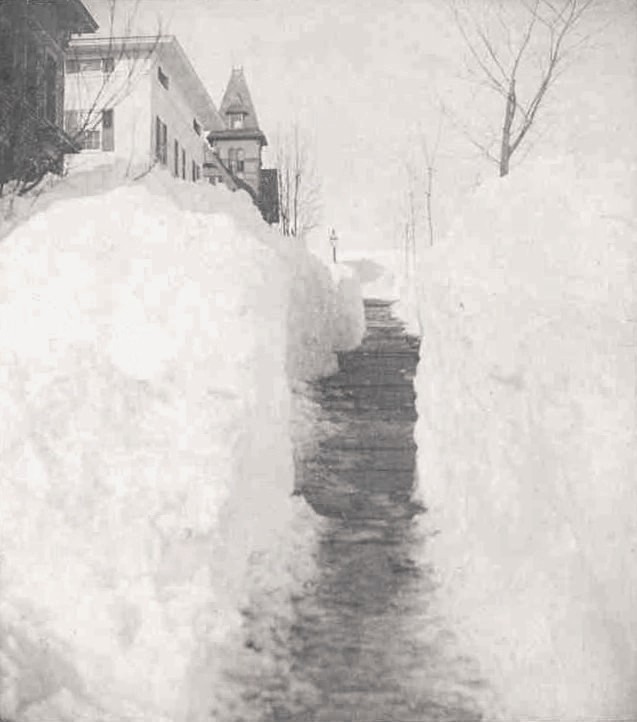
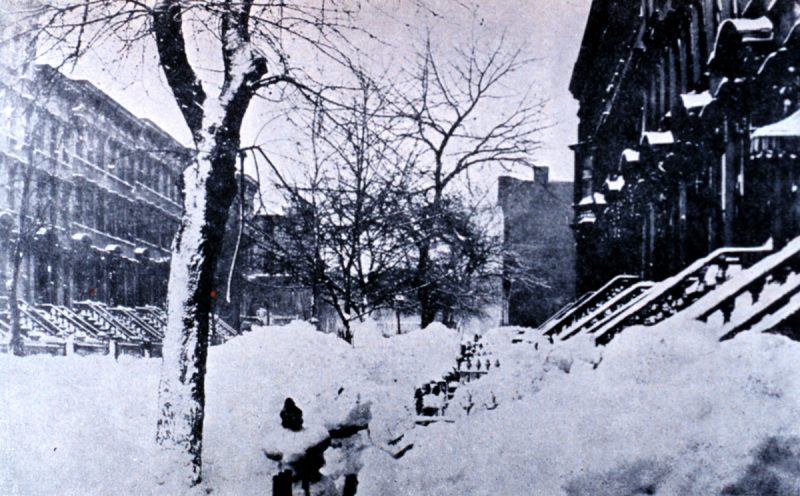
The blizzard resulted in the founding of the Christman Bird and Wildlife Sanctuary located near Delanson, Schenectady County, New York. It was listed on the National Register of Historic Places in 1970.
Not all areas were notably affected by the Blizzard of 1888; an article in the Cambridge Press published five days after the storm noted that the “fall of snow in this vicinity was comparatively small, and had it not been accompanied by a strong wind it would have been regarded as rather trifling in amount, the total depth, on a level, not exceeding ten inches”
